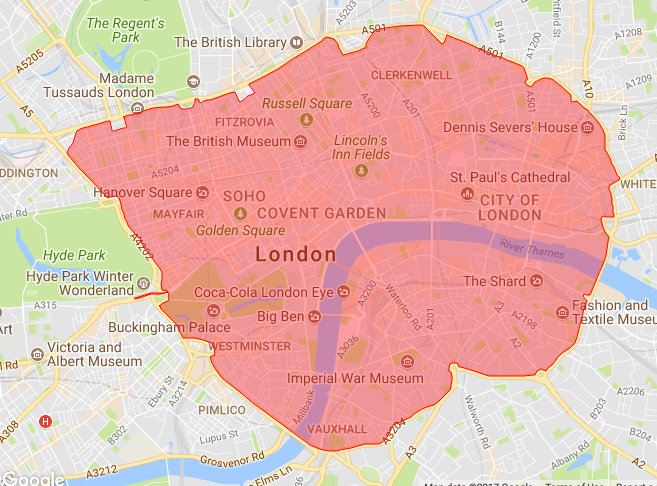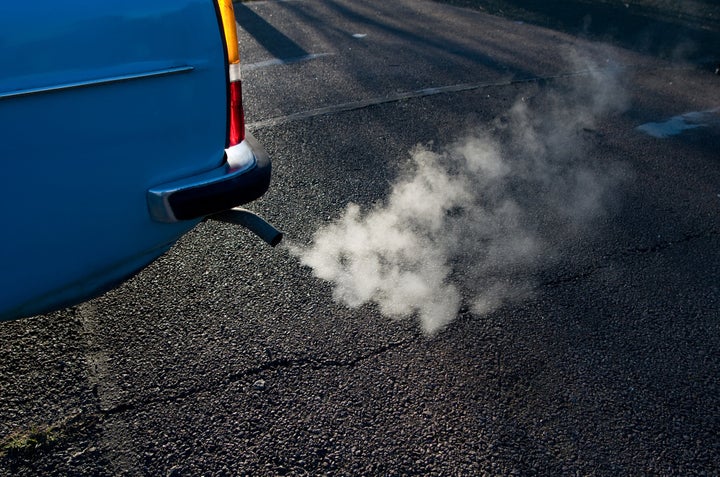As part of the mayor of London’s bid to tackle the city’s toxic air crisis, the new toxicity charge is set to roll out.
The £10 charge, known as the T-charge or emissions surcharge, will be slapped on top of the congestion charge for anyone driving vehicles which are heavily contributing to the city’s air pollution.
This will bring the total payment up to £21.50 for those having to pay both fees.
The T-Charge, which is estimated to affect around 10,000 vehicles, will be enforced through cameras around the capital.

In the run-up to its launch, Sadiq Khan said: “It’s staggering that we live in a city where the air is so toxic that many of our children are growing up with lung problems.
“Londoners overwhelmingly supported my plans to introduce this £10 charge... I will continue to do everything in my power to help protect the health of Londoners and clean our filthy air.”
Here’s everything you need to know about the new tax...
When does the T-charge come in?
The charge will be brought in on October 23, 2017.
It will apply between 7am and 6pm on weekdays.
Where does the T-charge apply?
The T-charge applies to the same area as the congestion charge.

Who does the T-charge apply to?
The charge will apply to vehicles that do not meet Euro 4 standards.
This typically applies to petrol and diesel vehicles registered before 2006.
How do I know if my vehicle is affected by the T-charge?
Your vehicle registration certificate will tell you what its Euro ranking is.
Transport for London also has a T-charge checker you can use to find out if you will need to pay the new fee as well as the congestion charge.
You can check your vehicle here.
How do I avoid the T-charge?
Use a different form of transports - walk, cycle, use a motorbike/moped or use public transport.
Buy a new vehicle. It’s not cheap but you’ll need one eventually.
Check if you’re exempt (see below).
Join a car club - all car club vehicles meet the emission standard. You can find out more on car clubs through TfL here.

Who is exempt from the T-charge?
Disabled blue badge holders.
Motorcycles, mopeds and scooters that are exempt from the congestion charge.
Taxis and private hire vehicles (PHVs) are exempt from paying the congestion charge and the T-charge when actively licensed with TfL. The exemption for PHVs only applies to private hire bookings.
Vehicles with a historic tax class (40 years and older) and/or commercial vehicles manufactured before 1973. These are still subject to the congestion charge.
Emergency service vehicles, such as ambulances and fire engines, which have a taxation class of ‘ambulance’ or ‘fire engine’ on the date of travel.
NHS vehicles exempt from vehicle excise duty, and Ministry of Defence vehicles.
Roadside recovery vehicles and accredited breakdown vehicles registered for a 100% discount from the congestion charge.
Specialist off-road vehicles such as tractors and mobile cranes (that are exempt from Low Emission Zone).
There are also a number of other exemptions and discounts available - check here for the full list.
While the charge has been welcomed by many, it has also had some critics.
Conservative London Assembly environment spokesman, Shaun Bailey, said the charge would inflict “crippling additional costs on small businesses”, as well as “expense, disruption and bureaucracy for London residents.”
According to the BBC, he also claimed it would not produce “any significant results” when it came to the battle against air pollution.

